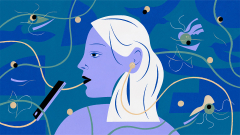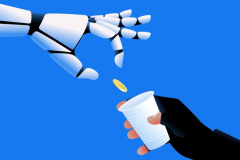
Brands racing to embrace customer service chatbots risk neglecting disabled communities.
September 17, 2024

Illustration by Ola Szczepaniak
Post
Post
Share
Annotate
Save
Get PDF
Buy Copies
The Americans with Disabilities Act (ADA) has served a critical role in advancing accessible and equitable communications for deaf and hard of hearing individuals. But as companies race to automate their customer service operations in recent years, many are inadvertently creating new barriers for deaf and hard of hearing people. Leaders can lean on the vision and spirit of the ADA to create more inclusive and accessible customer service programs in this era of AI. First, they should design customer experiences to be inclusive from the start by considering the requirements of deaf and hard of hearing individuals at every stage of service delivery. Second, they can repurpose a portion of the efficiencies gained from automation to support more complex customer service needs. Third, they should use an expansive mindset when engineering customer experiences by offering multiple channels of communication. Fourth, they must demonstrate socially responsible practices and highlight them in marketing and customer communications. Finally, leaders should involve individuals with lived experience as a person with a disability in the development of any AI-powered application.
For more than three decades, the Americans with Disabilities Act (ADA) has served a critical role in advancing accessible and equitable communications for deaf and hard of hearing individuals. The ADA has expanded the required use of sign language interpreters, mandated closed captioning on television, and has compelled access to telecommunications systems. While the ADA was passed long before today’s advanced technologies, its prescient call 34 years ago for equitable communications remains as relevant a guiding force as ever, a beacon illuminating a path toward accessibility in our AI-driven world.
New!
![]()
HBR Learning

Diversity, Inclusion, and Belonging Course
Accelerate your career with Harvard ManageMentor®. HBR Learning’s online leadership training helps you hone your skills with courses like Diversity, Inclusion, and Belonging. Earn badges to share on LinkedIn and your resume. Access more than 40 courses trusted by Fortune 500 companies.
How to build a better, more just workplace.
Start Course
Learn More & See All Courses
-
CS
Chris Soukup is the CEO of Communication Service for the Deaf (CSD), a pioneer of accessible communication services and technologies for the deaf community for nearly 50 years, including the first nationwide video relay service and ASL Now, the leading DVC solution in the United States.
Post
Post
Share
Annotate
Sa





